Latil Artillery Tractors
By Rakhi Anand

3815 Views
Latil, a French Automaker, built the first four-wheel, all-terrain vehicle called the motorized artillery tractor (TAR), which was sold to the French Army during World War I.
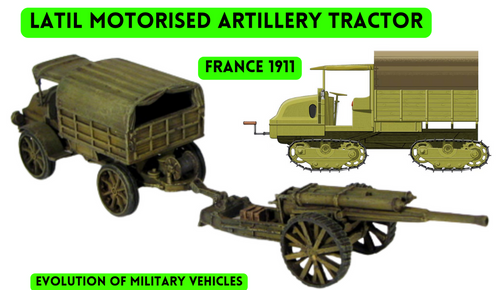
Before the First World War, the French Army had started looking for a mechanically powered vehicle capable of towing artillery pieces and heavy guns to the battlefield. The army was on the look-out for an all-terrain vehicle that could replace the animals employed to pull heavy loads on the roads and in the battlefield.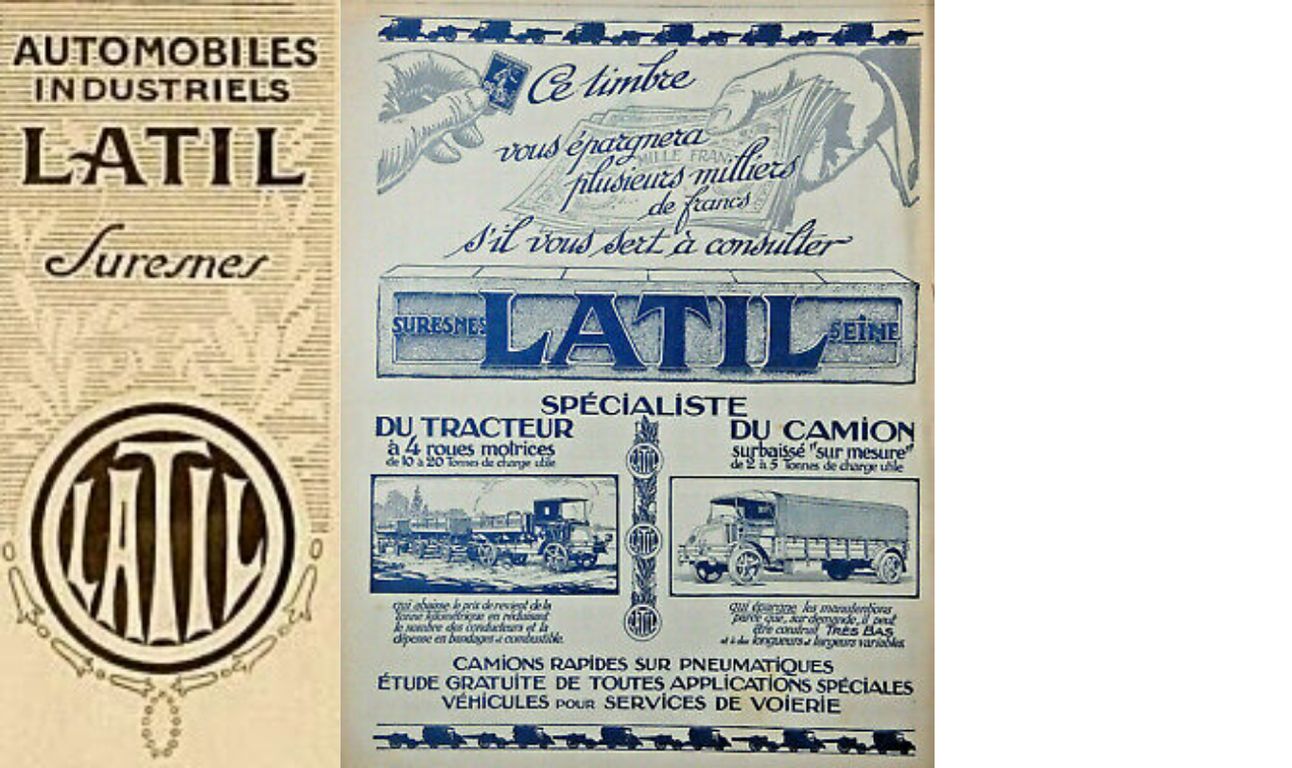 Latil, a French automaker, specialised in heavy duty vehicles. The French manufacturing company finalised the prototype of its truck in 1911. The truck created by it could be used both for military and civilian purposes.
Latil, a French automaker, specialised in heavy duty vehicles. The French manufacturing company finalised the prototype of its truck in 1911. The truck created by it could be used both for military and civilian purposes.
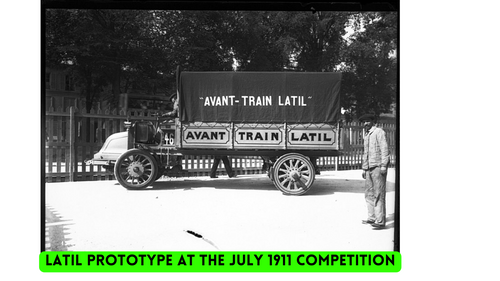
Military Test
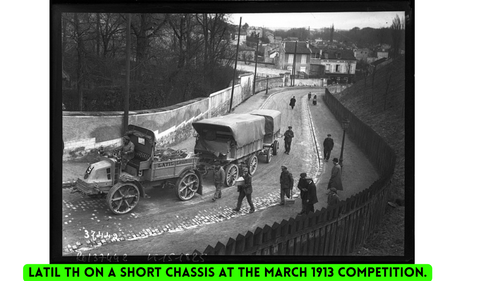
The French automaker got an opportunity to display the vehicle in March 1913, when a competition was launched by the War Ministry to test the newly developed vehicles. The War Ministry had set the following guidelines for the competition: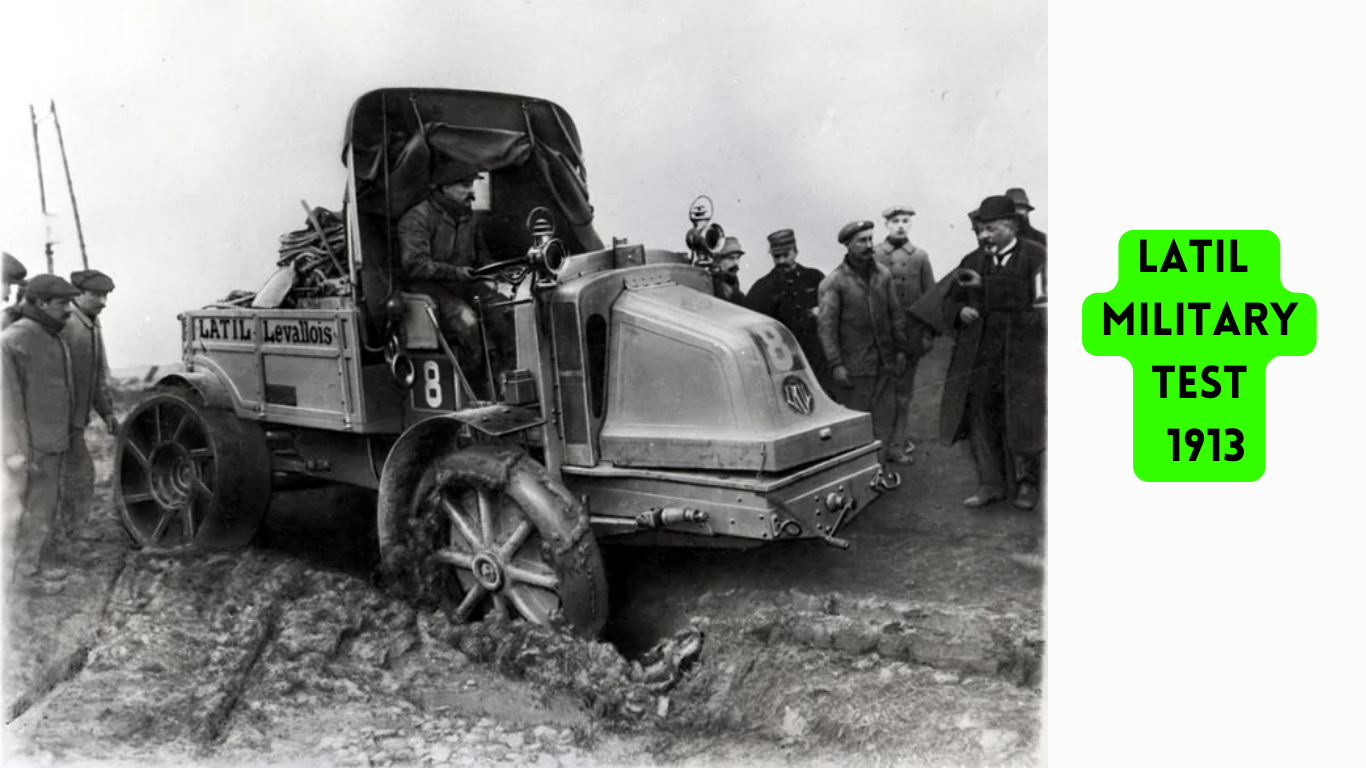
“The weight of the Truck should not exceed 7.5 tons, including 2 payloads. It should drive at an average speed of 8 km/h. The towing capacity should be 15 tons and the vehicle should be able to climb an 18% grade without a trailer.”
Several manufacturers came forward with their newly launched vehicles during the event. Panhard & Levassor in collaboration with Châtillon-Commentry presented the Châtillon-Panhard K11 while Latil presented the Latil TI tractor. After the tests, Latil TI tractor was preferred over the Châtillon-Panhard K11 by the military.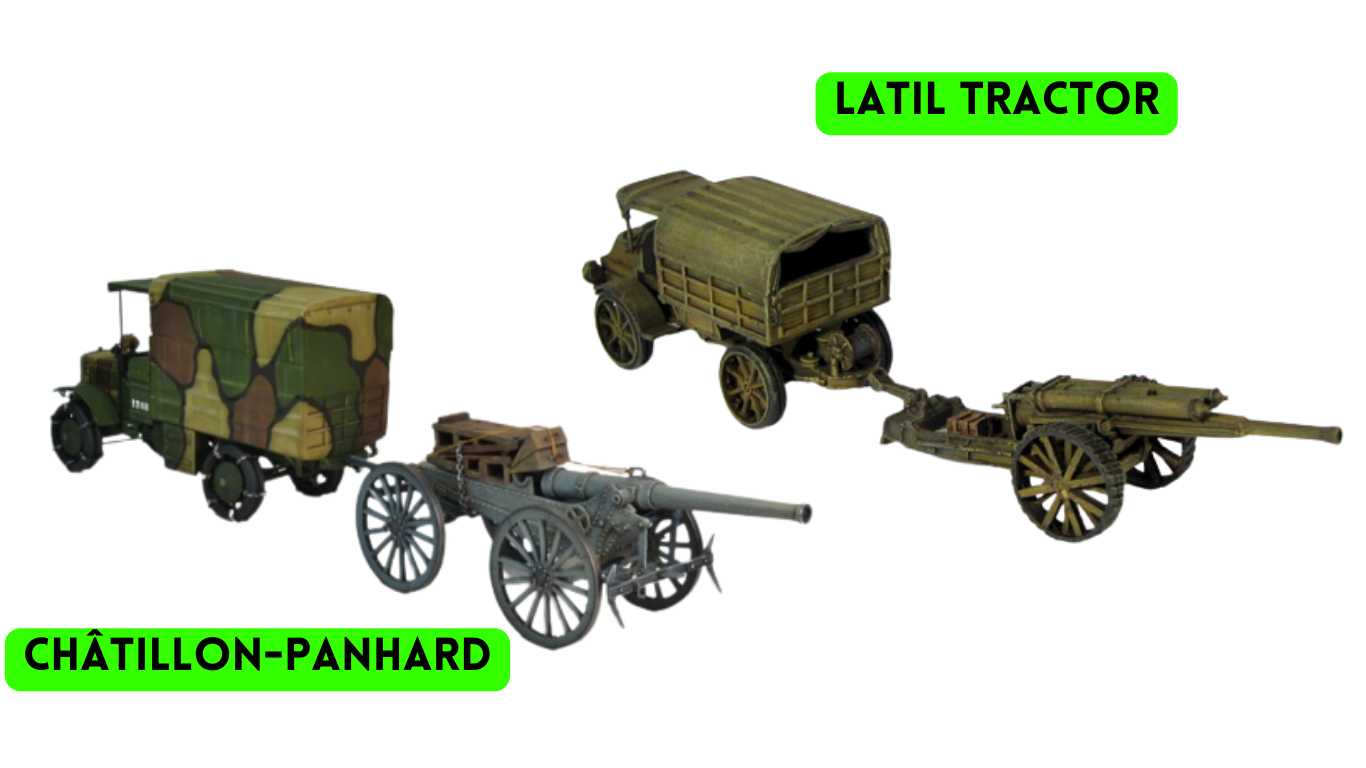
Thereafter, trailer competition was held in July-August 1913. In that competition Latil presented the Latil TH model.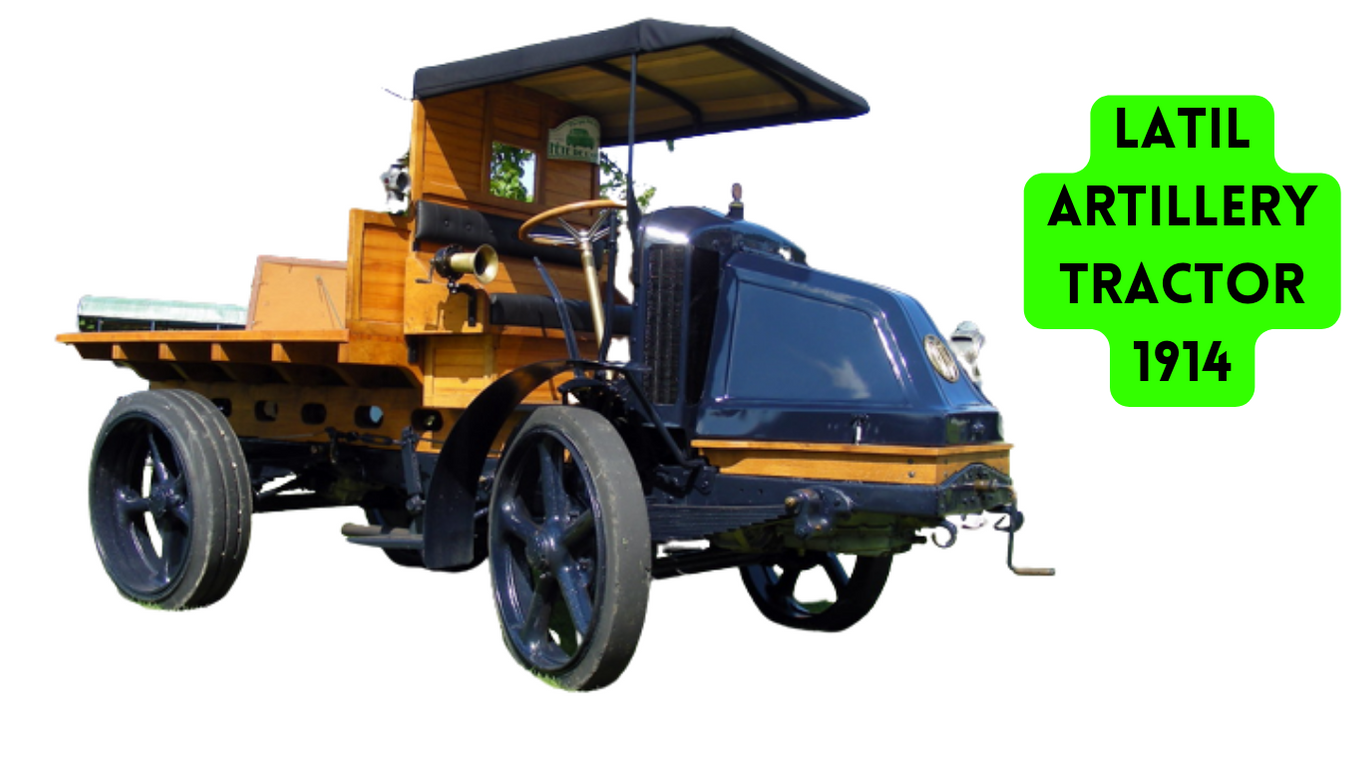
The second trailer competition was held in March 1914. During the competition, in the category of heavy tractors, along with Châtillon-Panhard K11 and the Latil TH, there was a newly launched artillery tractor Renault EG. The Renault EG had impressed the organisers and was an obvious choice over the other vehicles in the category. But when the tests were carried out, the vehicles could not be judged properly due to the difficult climatic conditions. As a result, no orders were placed at the end of the competition.Before WWI Latil had started manufacturing trucks that could be used as tractors in order to tow heavy artillery guns.
First World War
Latil's first version, the Latil TH, was produced from 1913 to 1915 and the first order was placed by the military in 1914. Latil trucks were used by the Army's artillery regiments during the First World War.
Latil TAR 4WD
In 1915, the French Manufacturing Company started manufacturing Latil TAR 4WD, an artillery tractor. The French lorry, equipped with very impressive off-roading capabilities, was manufactured exclusively for the French Army by Latil. The tractor’s performance on difficult terrain was made easier by the four wheel drive and it turned out to be a hot favourite with the French Army.
An army vehicle had to ply on difficult terrains that could have a large number of obstacles like rocks, rubble and even tree branches. But due to an excellent ground clearance, the Latil TAR 4WD was able to negotiate the hurdles on rough terrain without fail.
But there were times, when it got stuck in the mud when trying to move supplies and weapons to the battle ground across the French Countryside where the roads were not firm. Mechanically powered vehicles like Latil needed good and firm roads to operate. Though these incidents were occasional, the company knew that there was a need to develop an all-terrain vehicle that could negotiate shell crater, ditches and debris during the war effortlessly. The design team of Latil started working on the concept of an all-terrain vehicle.
The French Army utilised the mechanical vehicles to move the heavy guns. For the lighter field artillery and the guns which weighed under 6-tonnes, teams of six or eight horses were employed.
Did Latil 4WD have any advantages over the horse-drawn carriage?
Well, A Latil 4×4 TAR tractor was much faster when compared to the team of horses that moved the lighter artillery and guns. The space occupied by the tractor on the road was less than the space occupied by the horses. The number of soldiers needed to transport the guns was less when using the Latil Tar and the mechanically powered vehicle could cover longer distances in less time.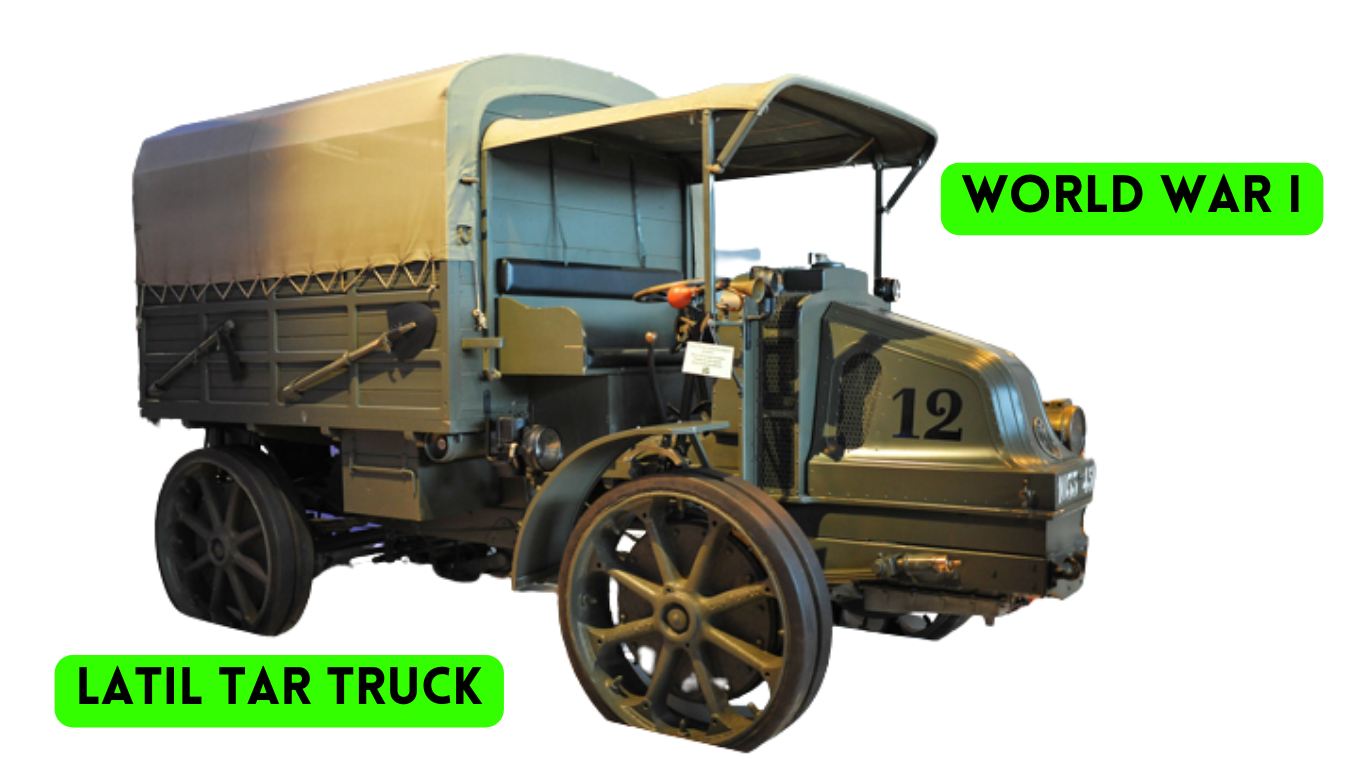
Latil trucks were also employed by the American Expeditionary Force (AEF) during WW1. Due to the robust features of Latil Tar 4WD, the French Army had kept them in service up until the start of WW2.
The Latil Tar was more suited for service in artillery units because of its great pulling power. When the tractor was loaded with 2-tonnes of weight, it could use its maximum traction force on ground. The French Army Latil TAR 4×4 lorry was designed to climb up a steep incline during the war. Latil company claimed that the vehicle could tow 20-tonnes of weight on a 15% gradient slope, 25-tonnes on a 12% gradient slope and 35-tonnes on an 8% gradient slope. But the vehicle needed a firm ground for best possible results.
The vehicle had five forward gears and one reverse gear. 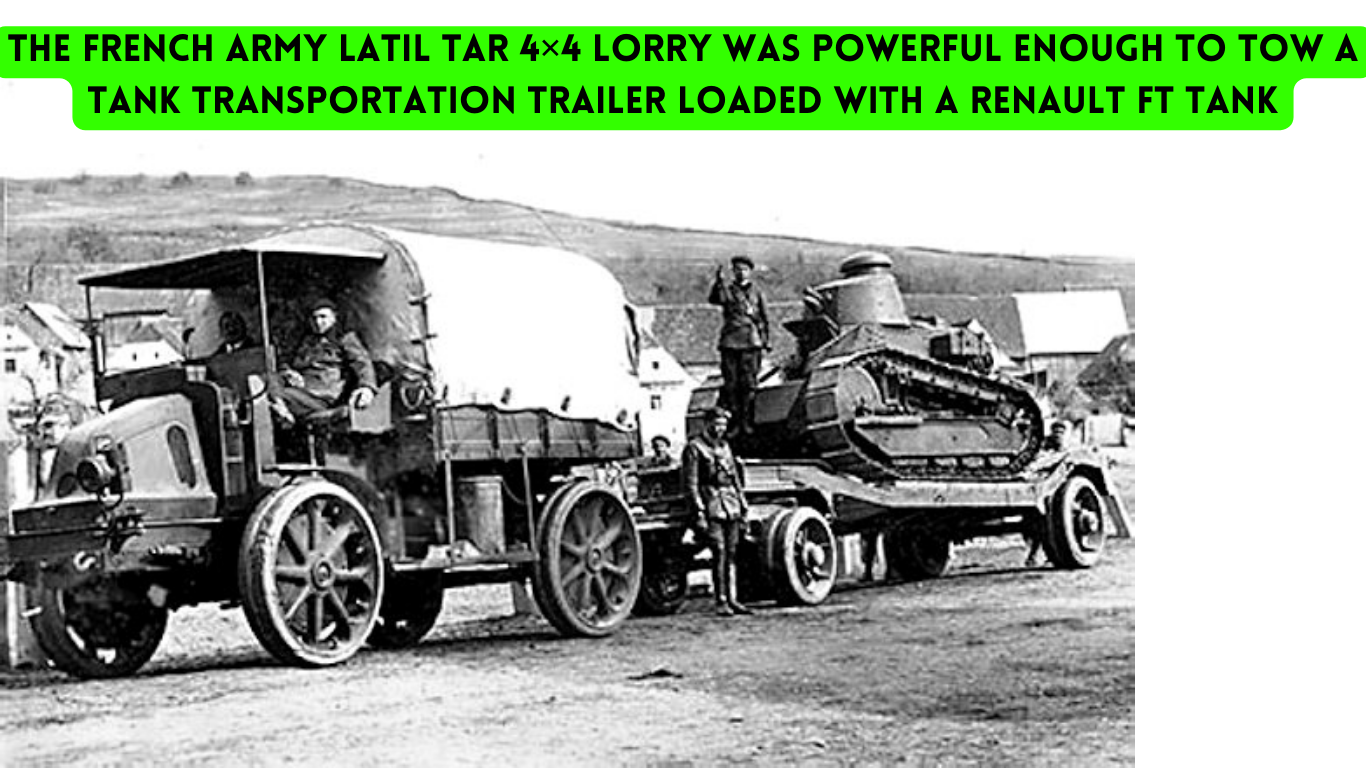
The Latil TAR 4×4 lorry employed by the French Army had enough power to tow a tank transportation trailer loaded with a Renault FT tank.
More About Latil Tar 4WD
The Latil TAR vehicle used a 4-cylinder, 4,200 cc, internal combustion engine that generated 30 horsepower.
The ground clearance height of the vehicle was 0.45 m.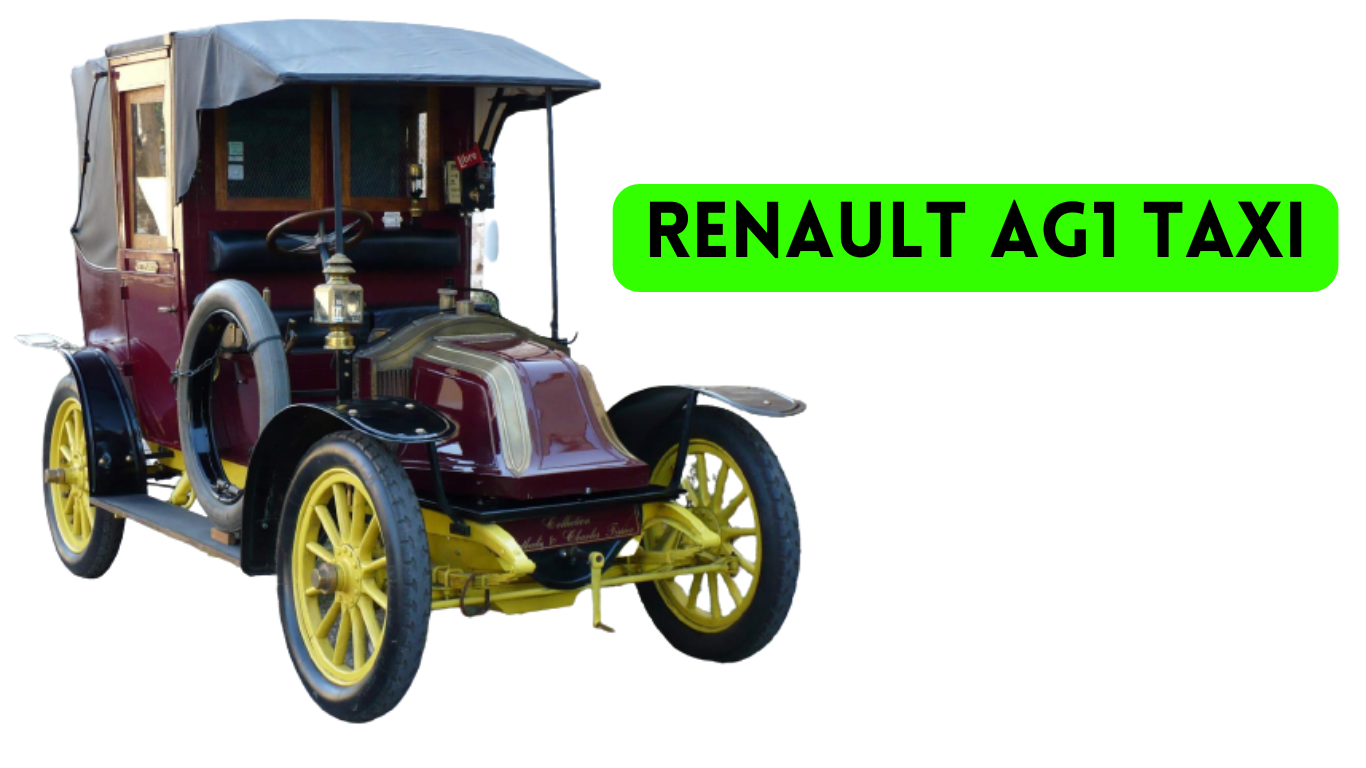
The engine cover looked narrow and was round in shape. During that time the French automotive designs followed a similar pattern. A similar design could also be seen on Renault 60 CV trucks and other French cars of that time like the Renault AG1. The front looked different from the rest of the vehicles as it did not have a radiator grille.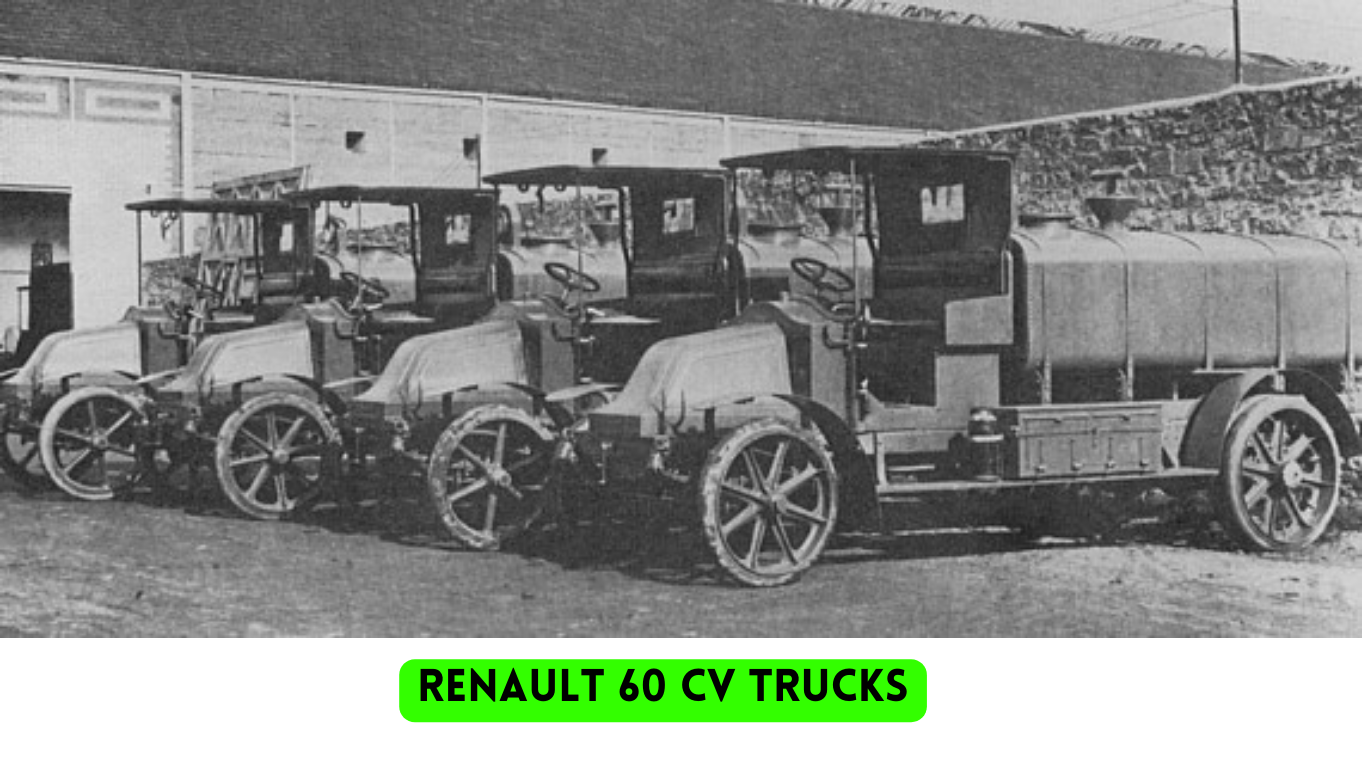
The lower frontal part had a hand crank that would help to start the engine manually.
The crew compartment was left open. There was only a tarpaulin cover to protect the occupants from the external factors. For seating, there was a bench.
Two lights were mounted just in front of the crew cabin, one on each side.
The steering wheels and controls were on the right-hand side of the vehicle.
The wheels of the vehicle were made of cast steel, and the wheels rotated to allow the use of twinned rubber tires. All four wheels of the vehicle were interchangeable.
The list price of the Latil 4×4 TAR without the bodywork was 35,000 francs in 1913.
The production moved to Latil Tar in 1915 and by November 11, 1918 , 2,000 Latils were in service. They were used to move heavy artillery and also functioned as recovery vehicles.
Removable Tracks
In 1915, a Latil TAR with four removable tracks placed on the four wheels, was put to test. The goal was to get an all-terrain vehicle without spending extra money. The tests were successful and, in all, six TARs with removable tracks were put into service in 1918.
The tracked vehicle used a standard Latil TAR truck with a differential that could be locked when required. Each wheel was removed and the track unit was fitted to the axle. The first version of the track unit that was used was elongated and oval shape. The next version that was made, as seen photographed on a vehicle in 1919, looked more triangular in shape. The triangular shape gave increased ground clearance to the vehicle. 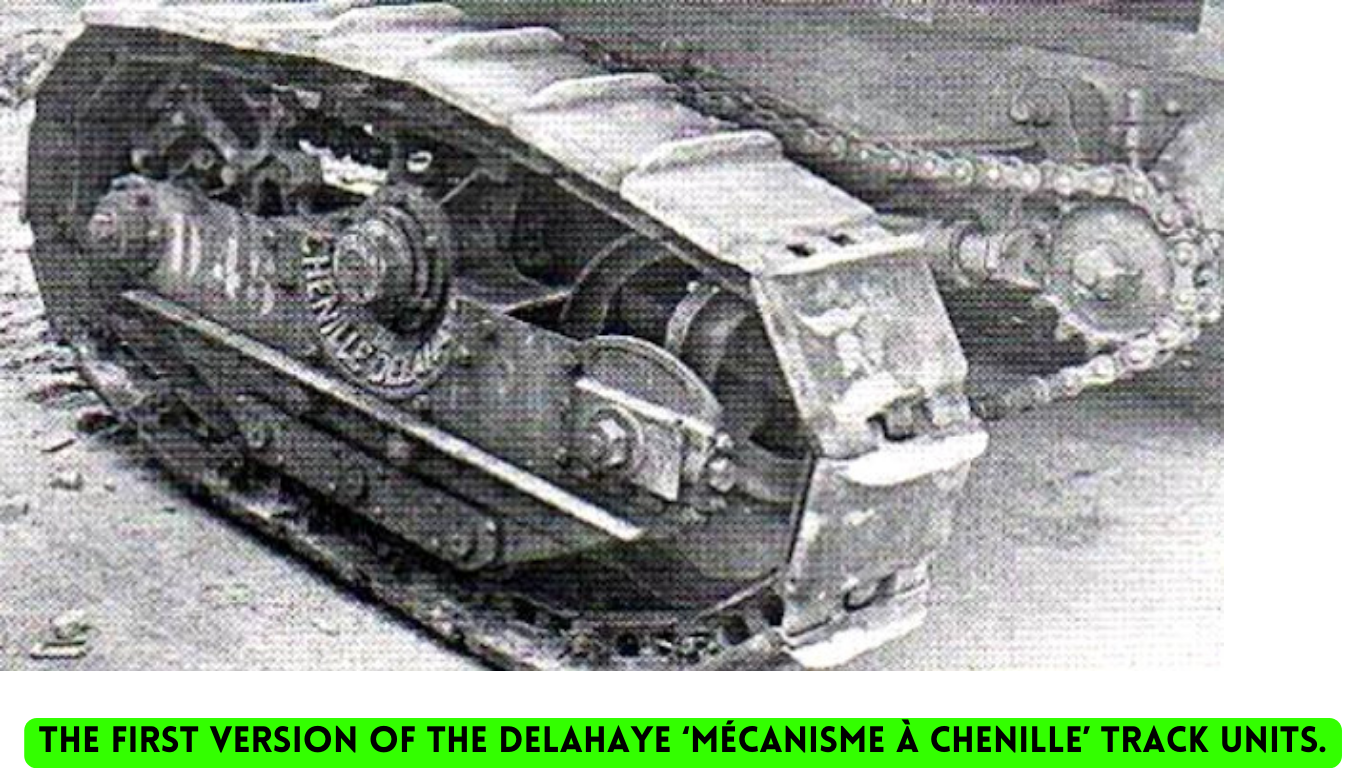
The track units used in the vehicle were designed and built by The French Delahaye Automotive Manufacturing Company. 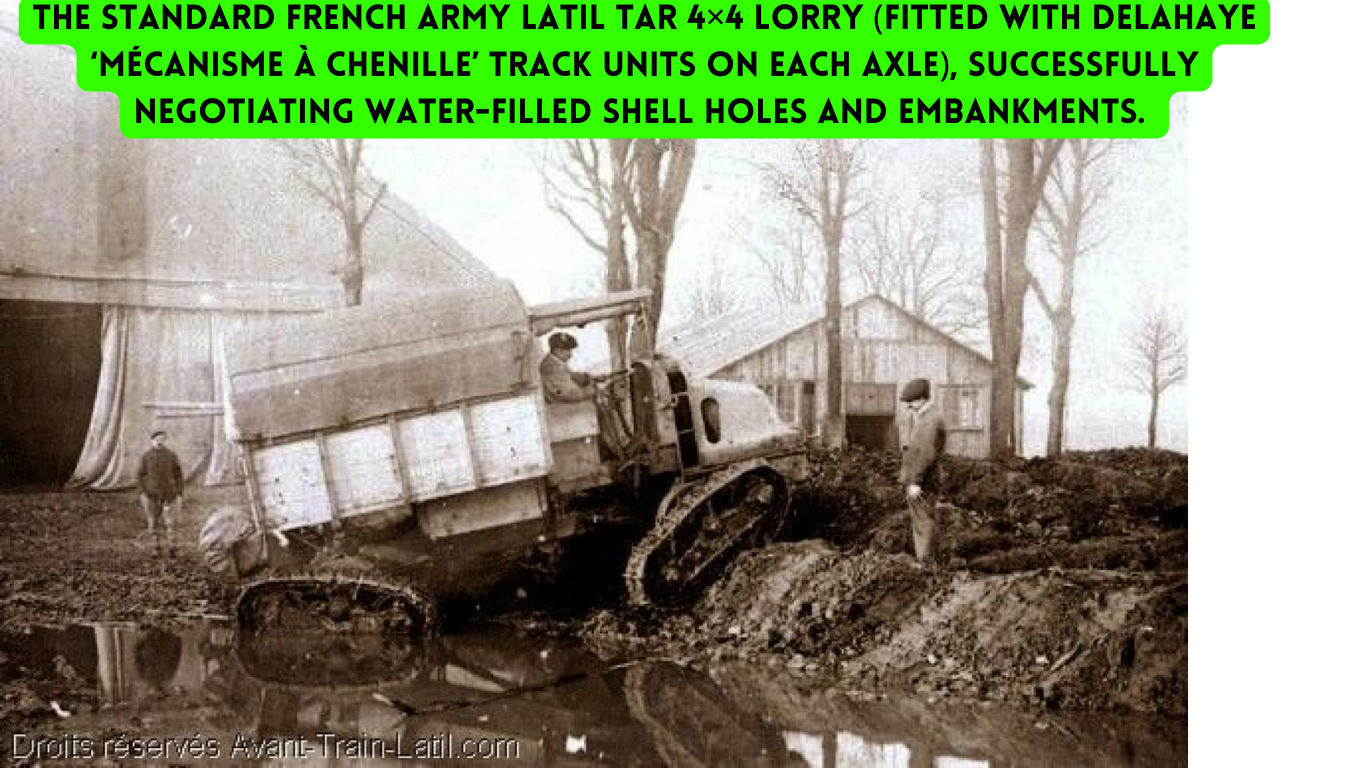
The standard French Army Latil TAR 4×4 lorry had difficulty negotiating on a muddy landscape. But once the Delahaye ‘Mécanisme à Chenille’ track unit was fitted on each axle, it could drive successfully through uneven roads, water-filled shell holes and embankments.
After the war, the Latil TAR, which had only been produced for the Army, was able to cater to the needs of the civilian population in a number of ways.
Upgrade
The Latil TAR went through upgrades from 1920 onwards. It was upgraded to TAR 2 in 1920, TAR 3 in 1924, TAR 4 in 1928, TAR 5 in 1930 and then FTAR in 1933.
Fate of Latil Tar 4WD
The different variants of the Latil TARs were ordered by the Army at 400 Units until 1934. More than 2,000 Latil TARs of different types were still in service at the start of World War II, despite the Army adopting the more modern Latil TAR H2 in 1934.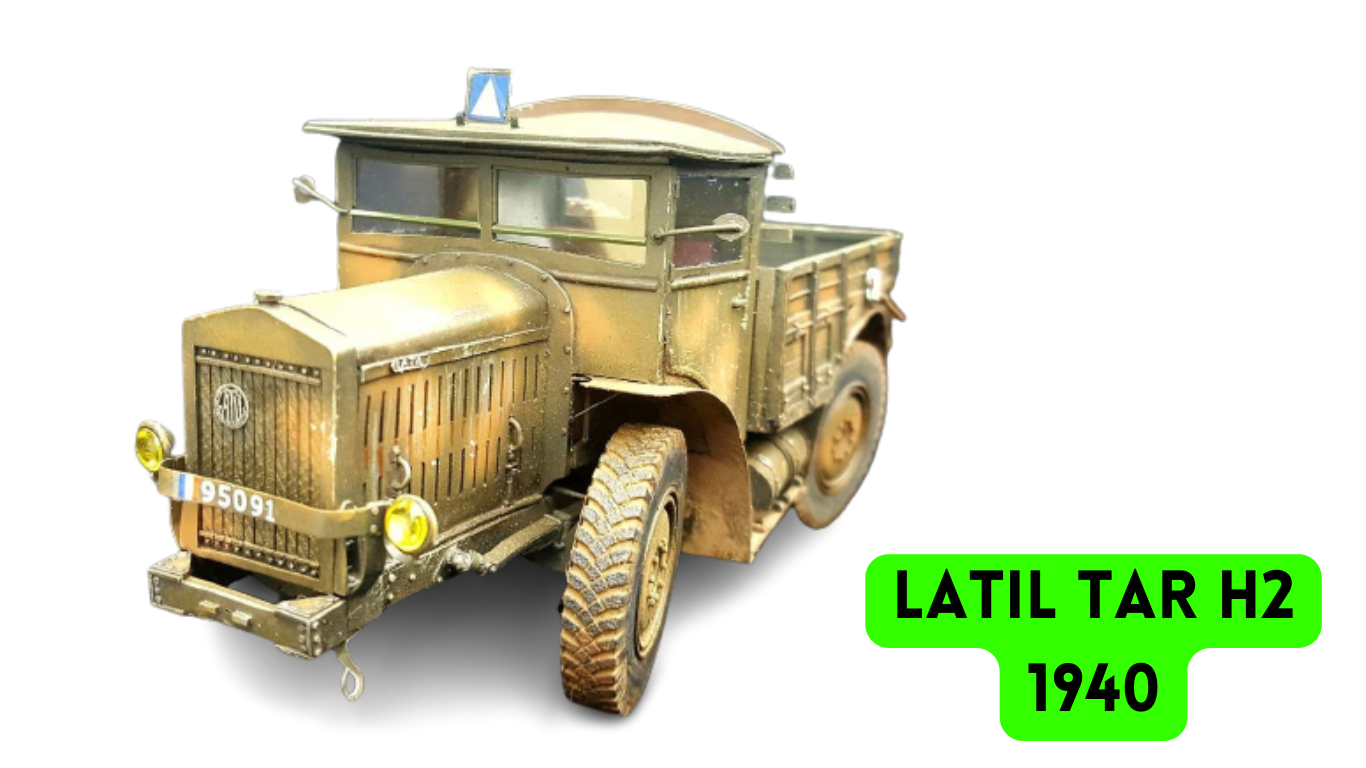
Through this article we have shared information about the Latil Motorized Artillery Tractors manufactured by the French Manufacturing Unit Latil during the course of the first and second world war. Our article series, ‘Evolution of Military Vehicles’ is our endeavour to bring out the most celebrated vehicles from the Military Automotive World. To find out more about our latest stories, keep checking our website. In case of any query, feel free to contact us.